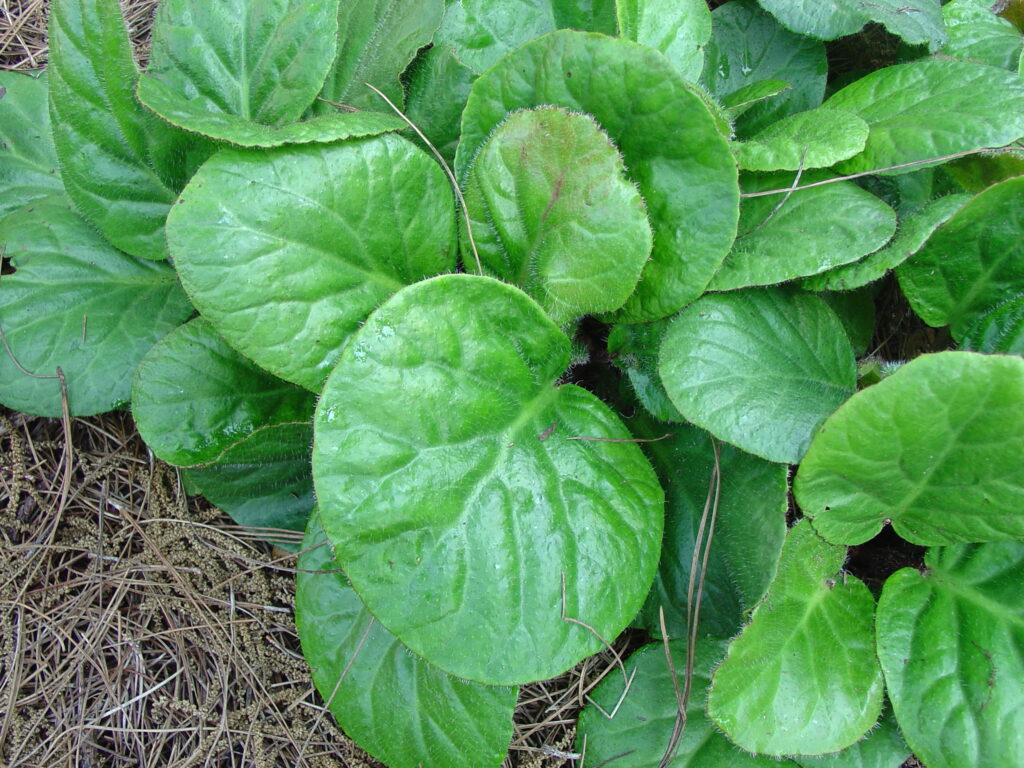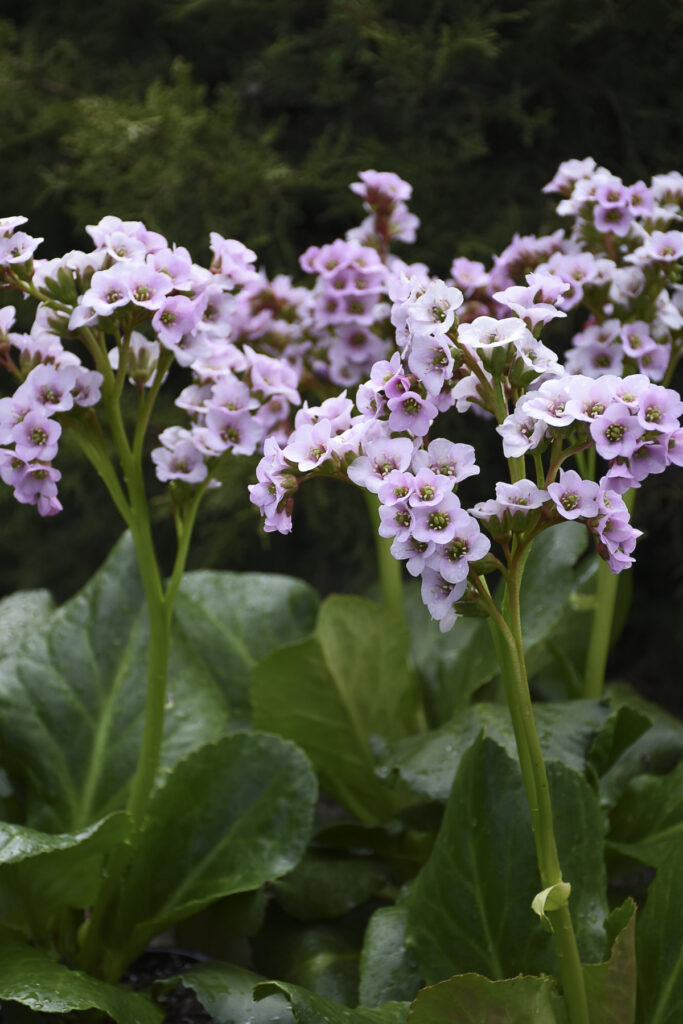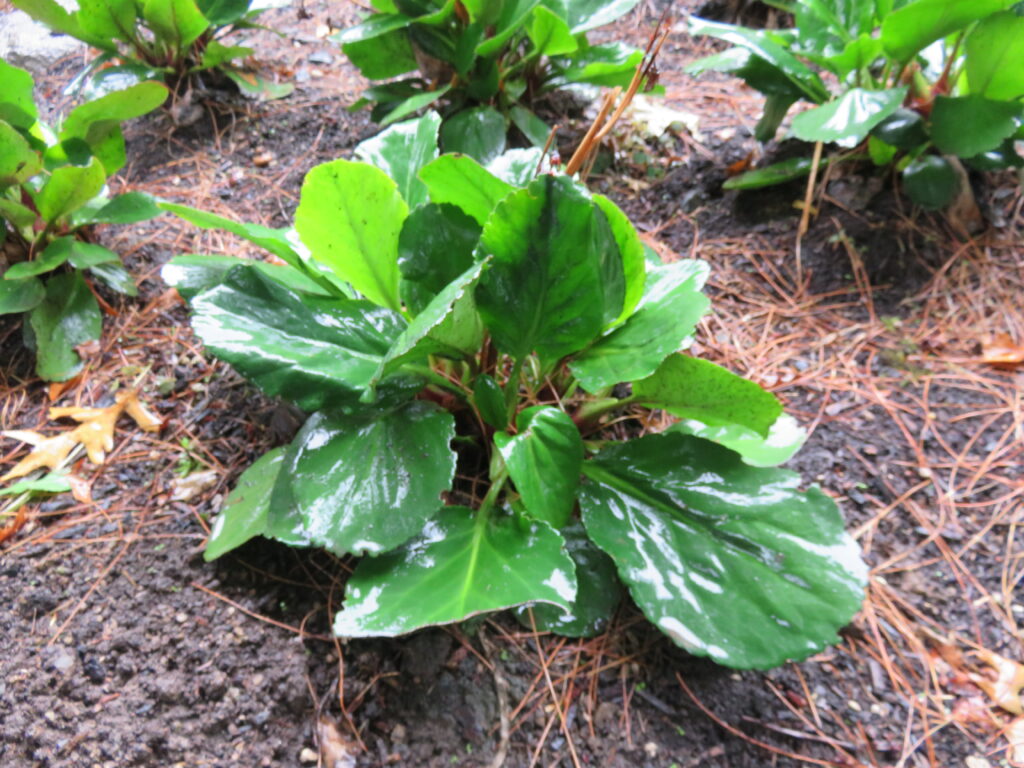
Bergenia (Bergenia spp), aka “pigsqeak”, is a herbaceous perennial with distinctive glossy, rounded leaves. Bergenias are native to the forest and alpine zones of China and Siberia. Eight species are available including heartleaf Bergenia (B. cordifolia), leather bergenia (B. crassifolia), and fringed bergenia (B. ciliata). Hybrid selections are also available. (USDA hardiness zones 4-8).
Bergenia’s colorful bloom spikes rise 12 – 16 inches tall in the early spring garden. Depending on the variety, the showy bell-shaped flower clusters come in white, pink shades, or purple colors.

The key reason for growing Bergenia is for the huge, round, brassica-like leaves which are deciduous in the north and evergreen in the Southern areas of the U.S. In a shady garden, its bold textured almost leathery foliage standout among perennials with finely textured leaves, such as ferns, bleeding hearts, and astilbes or broad-leafed hostas and brunneras.
Bergenias are rated as good shade plants, although they also perform well in sun. Set plants in humus-rich soil and mulch annually in late spring with well-rotted compost. In northern areas they thrive in almost any amount of sunlight (zones 4-6) and preferably in afternoon shade in the Southern U.S. (zones 7-8).
Whenever you spot bergenias growing poorly, the soil probably drains poorly or holds to much water over the winter months. Plants spread slowly via rhizomes (underground stems). The best time to divide rhizomes is in spring (after flowering) or in the fall. Dig up the whole clump, discard the old woody center and cut the remaining rhizomes into several sections, making sure each one has at least one leaf attached.
Bergenia leaf spot and anthracnose are fungal diseases that trouble this perennial. Deer are not rarely troublesome. Clip off and discard diseased leaves promptly. Avoid overwatering and water mainly in the morning hours. Slugs and snails can lurk under the leaves and disfigure the foliage.


 Posted in
Posted in 
